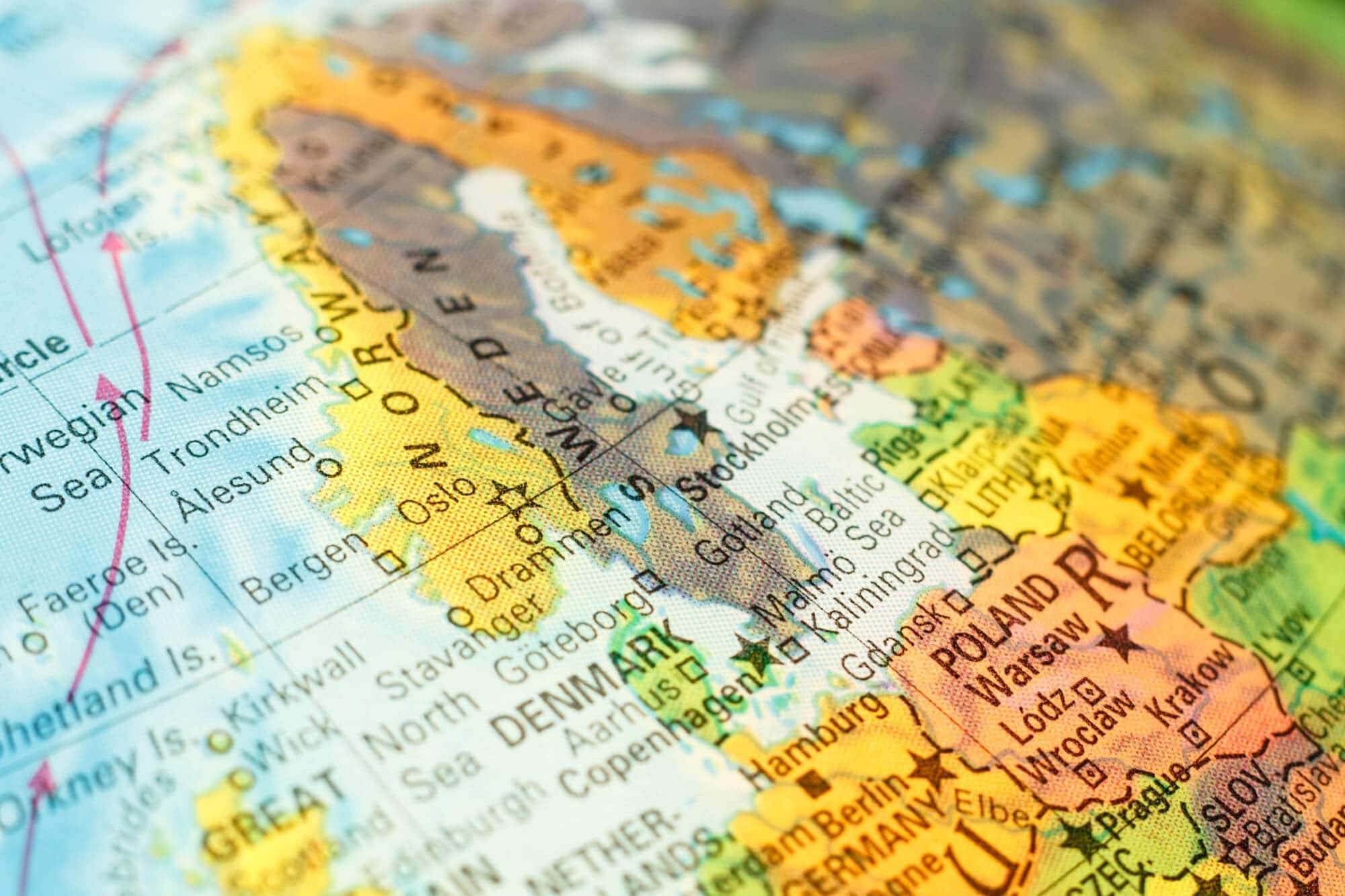Are you traveling to Norway soon? Then take a look at these useful Norwegian words and phrases!
If you’re an English speaker heading to Norway for the first time, you have nothing to worry about. Most Norwegians can speak some English (we learn English in school from the 1st grade) and tourism information is usually available in English as well as a few other languages.
I do, however, always like to look up a few words before I travel to a new country. Knowing how to say the most common words like hello, please and thank you will get you a long way with the locals.
So even if it’s just to flatter us with an attempt at speaking our language, here are some basic Norwegian words and phrases for you to learn before you go!


✅ DON’T FORGET TRAVEL INSURANCE!
SafetyWing is an affordable subscription travel insurance that you can purchase without knowing your itinerary in advance and even after departure.
Article overview
The Norwegian Language
Norwegian, along with Swedish, Danish, Icelandic and Faroese, is a North Germanic language. Written Norwegian is virtually identical to Danish and some Norwegian and Swedish dialects are very close. Swedes, Norwegians, and Danes can understand each other, but it’s not always as easy as one would think.
I once met a Swedish guy at a hostel in Byron Bay and in my mind, we talked exactly the same. But he could not for the life of him understand what I was saying, even when I talked super slow. So I had to change to English while he spoke to me in Swedish.
So I guess most Norwegians understand Swedish very easily but not always the other way around. We grew up watching a lot of Swedish tv-shows so that might have something to do with it.
Danish is a little harder for me to understand. They often talk very fast and don’t pronounce words clearly like I’m used to in Norwegian. Some dialects are fine but some I can’t understand at all.
So last time I was on a press trip to Denmark, I had a hard time keeping up with the conversation in Danish. Which I found very embarrassing because it seemed like they could all understand me. And as far as I know, it’s even harder for Swedes and Danes to understand each other.
Nynorsk
Today there are two official forms of written Norwegian, Bokmål (which literally translates to “book tongue”) and Nynorsk (new Norwegian), each with its own dialects and variants. About 12% of the population use Nynorsk and for the rest of us, Nynorsk is a mandatory subject in school.
I still can’t understand why as learning two different forms of a language that are so similar seems incredibly unnecessary. But anyway, the words and phrases in this article are written in Bokmål.
Pronunciation
Æ – the a sound in mad
Ø – the i sound in bird
Å – the a sound in ball
ei – is pronounced like æj – Norwegian example: hei
ai – aj – Norwegian example: hai
øy – øj – Norwegian example: tøy
au – æv – Norwegian example: sau


Useful Norwegian words & phrases
Here I’ve compiled lists of the most common Norwegian words and phrases that can make your holiday in Norway even easier.
How to say yes/no in Norwegian
| English | Norwegian/norsk |
| Yes | Ja |
| No | Nei (pronounced næi) |
| Not | Ikke |
| Yes of course | Ja, selvfølgelig |
| Absolutely not | Absolutt ikke |
How to say hello in Norwegian
Learning how to say hello in different languages takes little effort but makes a world of difference.
Greetings are often the first point of contact in any interaction, and being able to greet someone in their language can immediately create a positive impression and foster a sense of connection and mutual respect.
It can help break the ice and create a friendly atmosphere. I have experienced so many times when traveling that just saying a few words in the native language makes people light up and more willing to help.
Politeness is a very important trait to us Norwegians, although we are polite in an informal way. We greet people with just a simple hi or hello and we call everyone by their first name.
| English | Norwegian/norsk |
| Hi | Hei |
| Hello | Hallo |
| Hi there | Heisann |
| What’s up? What’s happening? | Hva skjer? |
Other greetings
You don’t need to say how are you unless you actually know the person and want to know how they are. We Norwegians like to keep things understated. And remember to smile, be patient and always say thank you!
| English | Norwegian/norsk |
| Goodbye | Ha det |
| Thank you/Thanks | Takk |
| Thank you very much | Tusen takk (thousand thanks) |
| You’re welcome | Vær så god |
| Please | Vær så snill (be so kind) |
| Excuse me | Unnskyld meg |
| My name is | Jeg heter/Mitt navn er (formal) |
| I don’t speak Norwegian | Jeg snakker ikke norsk |
| Can you repeat that? | Hmm. Kan du gjenta det? |
| Cheers! (for drinking) | Skål! |

Travel & transportation
Here are some of the most common words and phrases in Norwegian you might come across while traveling.
| English | Norwegian/norsk |
|---|---|
| Train | Tog |
| Bus | Buss |
| Subway, Underground | T-bane |
| Airport | Flyplass |
| Train station | Jernbanestasjon |
| Bus station | Busstasjon |
| Where is …? | Hvor er …? |
| Where’s the nearest bus stop? | Hvor er nærmeste busstopp |
| Open/closed | Åpent/Stengt |
| One ticket to …, please | En billett til …, takk |
| How much does a ticket to … cost? | Hvor mye koster en billett til …? |
| I’m lost | Jeg har gått meg bort |
Is it hard to learn Norwegian?
Norwegian can be a challenging language to learn for some people, especially those who are not familiar with Germanic languages or the Scandinavian language group.
One of the factors that contribute to the perceived difficulty of learning Norwegian is the grammar. Norwegian has three genders (masculine, feminine, and neuter), which can be daunting for beginners.
Additionally, the language features verb conjugations, noun declensions, and a variety of irregularities that can pose challenges for learners.
Pronunciation is another aspect of Norwegian that learners may find challenging. The language has a wide range of vowel sounds and consonant clusters that are not present in English, which means you have to invest some time into mastering the phonetics. However, compared to Danish (which is spelled very similarly) pronouncing Norwegian is a piece of cake.
Furthermore, Norwegian has tonal accents that can change the meaning of words, adding another layer of complexity to the language.
Despite these challenges, several factors can make learning Norwegian an achievable goal. Firstly, the Norwegian language is known for its logical and consistent spelling rules.
Norwegian also has a relatively simple sentence structure, which can make it easier for you to construct basic sentences and express yourself in the language.
Benefits of learning a new language
- You grow new neuronal connections, it’s like a gym for your mind and can help in preventing dementia.
- It can improve your decision-making skills.
- Some research indicates a strong connection between multilingualism and creative flexibility, fluency, and originality.
- Learning a second language can develop new areas of your mind and strengthen your brain’s natural ability to focus.
- Bilingual speakers also have enhanced cognitive flexibility, which facilitates new learning and multitasking.
Popular Norway travel guides
- Hadeland Glassverk: History & Design just one hour from Oslo
- Norway Budget Breakdown: How much does one week in Norway cost?
- 10 incredibly beautiful beaches you won’t believe exist in Norway!
- 42 fun & interesting facts about Norway: I bet you didn’t know that…
- The ultimate Norway bucket list: top 200 awesome things to do!
Remember to pin this 😉










Leave a Reply